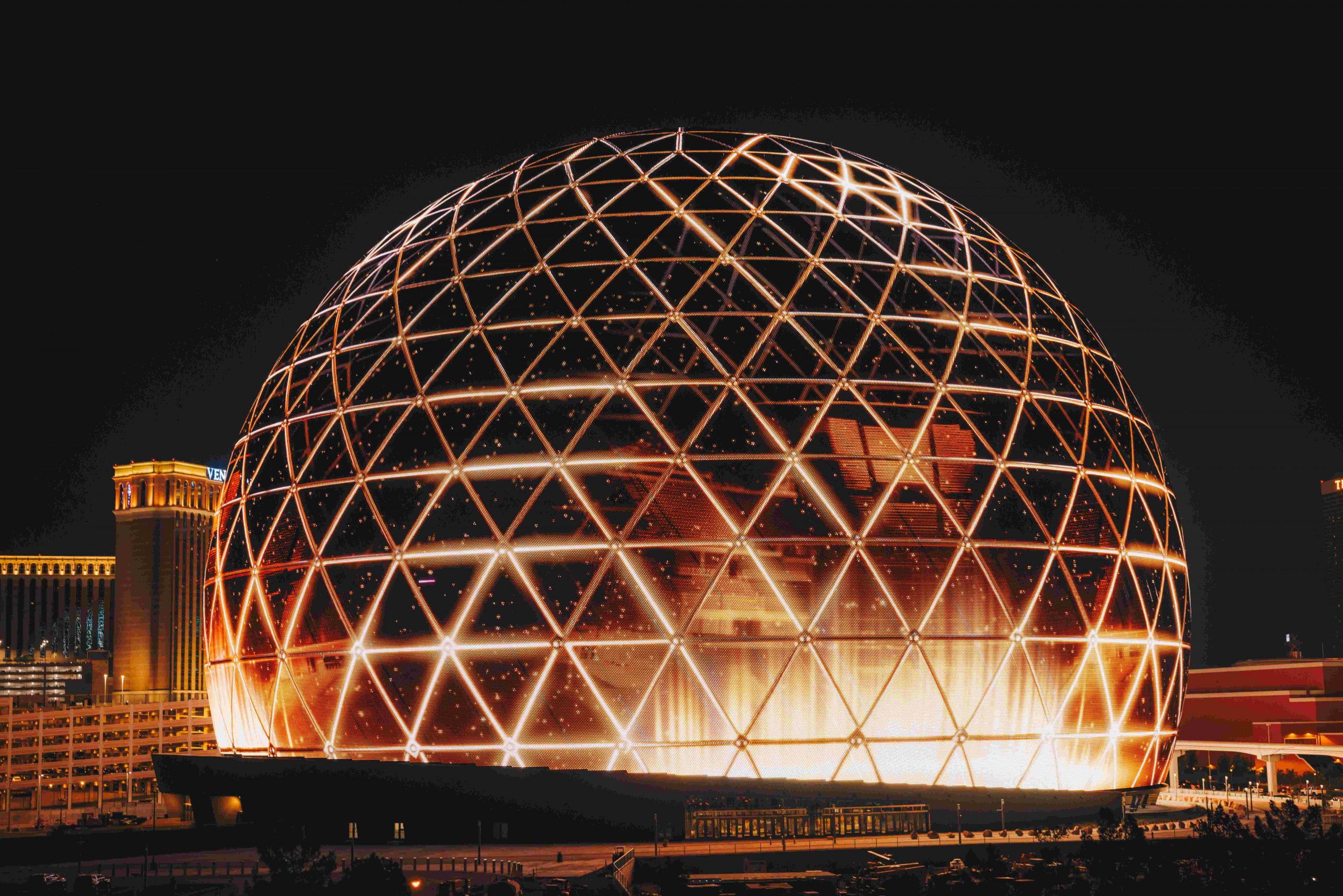How Parametric Analysis Powered Severud’s Engineering of Sphere
August 20, 2024
Often, structural engineering projects involve a variety of challenges surrounding complex geometries, unconventional materials, and a whole lot of other variabilities, risks and uncertainties. All these factors and more affect the behavior and performance of structures. Moreover, apart from turning designs into tangible structures, structural engineers must ensure their strength and stability, while also optimizing time, costs, and aesthetic design. One of the best methods to achieve these objectives, and tackle all the challenges along the way, is with Parametric Analysis and Design. Here’s a look at what Parametric Analysis means, and how Severud leveraged this in engineering the iconic Sphere, located at the Venetian Resort, in Las Vegas, Nevada.
What is Parametric Analysis?
Parametric Analysis is a unique approach in architectural and structural design that has gained widespread popularity. It is being extensively adopted due to its valuable contribution to and influence on in the design process. It involves running simulations using structural and architectural design parameters and systematically changing these parameters to evaluate their impact on the structure. This helps explore various design options and evaluate their impact on aesthetics, structural integrity, cost, and other factors.
In other words, the structural design is created to adapt to changing parameters and conditions. This approach empowers structural engineers to tackle the uncertainties and challenges involved in engineering complex designs. According to an article by Tekla, a company providing software solutions for structural engineering, Parametric Design offers several benefits for structural engineers, including speed, accuracy, flexibility, innovation, and better productivity.
By incorporating parametric analysis, structural engineers can explore multiple possibilities, and fine-tune the performance parameters of every structure. This helps create more sustainable, efficient, and visually appealing structures.
About Sphere in Las Vegas, NV
Before understanding the role of Parametric Analysis in engineering Sphere, it’s crucial to know why this colossal structure has captivated the world and garnered widespread acclaim.
Sphere, parametrically designed by Severud Associates, is the largest spherical structure in the world and was constructed at a cost of $2.3 billion. Sphere has a capacity to entertain a seated audience of 18,600. It features the largest high-resolution LED screen in the world, and has an exterior wrapped in 580,000 sq. ft. of programmable lighting. And featuring the world’s most advanced concert-grade audio system, Sphere stands as the world’s largest immersive entertainment destination.
How Severud Leveraged Parametric Analysis of Sphere
Parametric Analysis played a crucial role in the structural design and engineering of Sphere. It helped Severud address complex geometric challenges, ensuring structural integrity, optimizing aesthetics, and improving efficiency. It enabled Severud to take a flexible approach towards exploring numerous design possibilities, paving the way for innovative solutions that helped save time and resources.
Navigating the Parametric Analysis Process for The Sphere
Step 1: Defining Parameters
This step involved identifying the key parameters that drive the structural design. For Sphere, these included the radius, base, gravitational and environmental loads (e.g., wind), number of rings, and number of diagonals.
Step 2: Creating a Model
Severud developed a digital model incorporating various parameters. Specialized software like Rhino with Grasshopper, Autodesk Revit, and other parametric design tools were used to create this model.
Step 3: Running Simulations
Severud performed structural simulations to see how changing each parameter affected the design. For example, adjusting the radius changed the surface area and the structural load requirements. Additionally, the number of rings and diagonals had an appreciative measure of structural efficiency.
Step 4: Analyzing Results
This involved evaluating the results of the simulations to determine which parameter values produced the best results in terms of aesthetics, structural integrity, costs, and other criteria.
Step 5: Iterating
Severud refined the design by iterating through different combinations of parameters, continually improving the model based on analysis results. An Evolutionary Solver, in this case Galapagos, was used to goal seek.
Application of Parametric Analysis to Sphere
Sphere is a massive entertainment venue with a unique spherical design. Severud used parametric analysis extensively in various aspects:
1. Dealing with the Geometric Complexity
Sphere’s unique spherical shape presents complex geometric challenges. Severud used parametric analysis to explore different meshes and structural supports to not only achieve the desired shape, but also optimize the structure for use of material.
2. Ensuring Structural Integrity
Parametric analysis played a crucial role in determining the optimal arrangement and sizing of the steel diagrid structure that supports Sphere’s geosphere. By simulating different load conditions and structural configurations, Severud could identify the most efficient design, while also collaborating with the architect and various stakeholders on functionality.
3. Wind and Seismic Analysis
Severud conducted extensive wind and seismic analyses using parametric tools to simulate different scenarios and adjusting parameters like the shape, mass, and stiffness of the structure which also allowed for seamless collaboration with RWDI, the wind tunnel consultant. This helped ensure Sphere’s resilience to wind loads and earthquakes.
4. Aesthetic Considerations
The exterior of Sphere features a dynamic LED display, structured by a complex system of strands and diodes. Severud employed parametric design tools to optimize the panel layout and integration of these elements to ensure functionality and efficiency, while achieving the desired visual effect.
5. Efficiency and Material Optimization
By using parametric analysis coupled with an evolutionary solver, Severud evaluated various options for the structure of Sphere. Based on factors such as weight, strength, durability, and cost, the most efficient and cost-effective structural tessellation was identified. This helped optimize the use of materials and construction techniques, reducing waste and costs while maintaining the design’s integrity.
Conclusion
Parametric Analysis is a powerful approach that allows structural engineers and architects to create innovative and efficient structures. It played a key role in Severud’s design and engineering of Sphere. The structural integrity and aesthetic appeal of Sphere speak volumes about the contribution of parametric analysis and tools in delivering iconic and innovative structures that push engineering boundaries.
